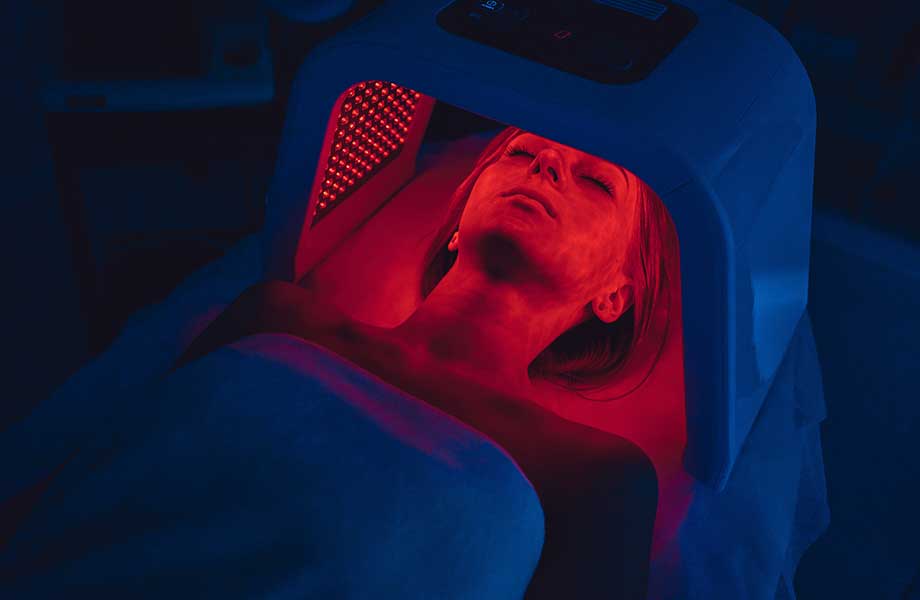We test and review fitness products based on an independent, multi-point methodology. If you use our links to purchase something, we may earn a commission. Read our disclosures.
As someone with rosacea, I know how frustrating it can be to spend money on creams, topical ointments, and other skin treatments that do nothing to calm the redness and irritation. Red light therapy (RLT) has intrigued me for a while, but my hesitation to try new things has kept me from buying one of the best red light therapy devices. Plus, I’m always cautious about introducing new treatments to my skincare routine because it’s hard to decipher what’s safe and what can do more harm than good.
So, I decided to dig into the research to learn about the potential red light therapy dangers and decide if it’s worth considering to help treat my skin concerns. As it turns out, red light therapy is generally considered safe for healthy individuals. However, there is still a risk of side effects, and certain populations should avoid red light therapy altogether.
What Is Red Light Therapy?
Red light therapy is a form of photodynamic therapy (PDT) that uses low-level wavelengths of red light to treat various health and skin concerns. While it’s been around for decades, its popularity started growing in the 1990s when NASA scientists studied how red and blue lights can drive photosynthesis in plants. The scientists who spent long periods of time with their hands under the lights discovered that minor abrasions healed faster than normal.
Today, red light therapy treatments are found in dermatologists’ offices, doctors’ offices, spas, and other healthcare settings. You can even buy red light therapy devices to use at home. Various options are available, including wands, face masks, belts, panels, and wraps. Many at-home devices are FDA-approved, but they aren’t always as powerful or effective as the ones used by healthcare professionals.
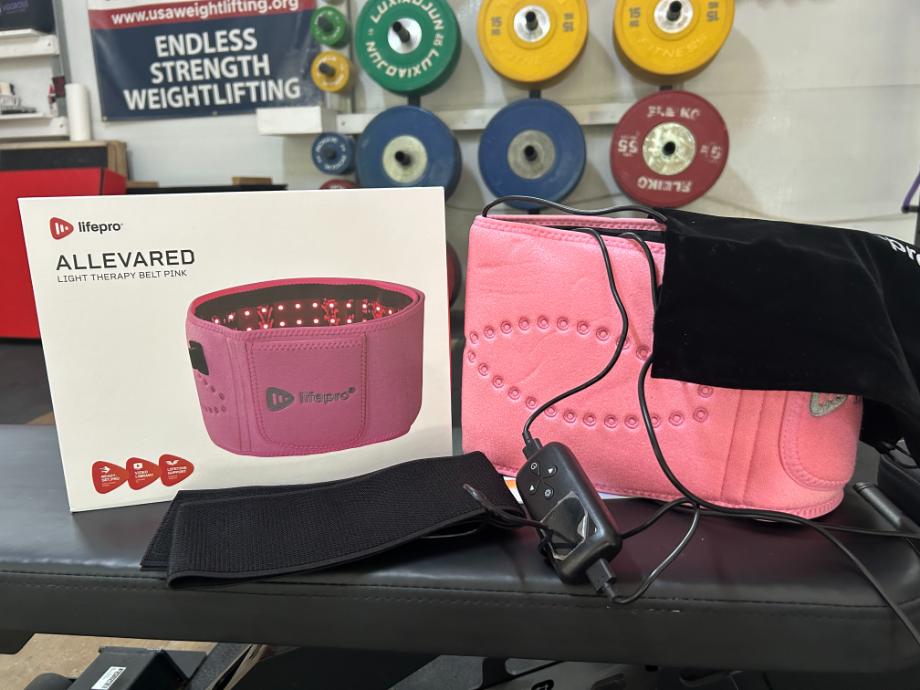
Red light therapy has a few different names, including:
- Photobiomodulation (PBM)
- Photonic stimulation
- Biostimulation
- Phototherapy
- Low-level laser therapy (LLLT)
- Low-power laser therapy (LPLT)
RELATED: Best Biohacking Products
How Does Red Light Therapy Work?
How exactly does red light therapy work? Red light therapy exposes the body to low wavelengths of red light-emitting diodes (LEDs). The LEDs penetrate the skin and allow the mitochondria (the powerhouse of the cell) in the skin cells to absorb the light particles. This makes it easier for the cells to produce more energy in the form of adenosine triphosphate (ATP).
When the cells have extra energy, they’re better equipped to repair themselves and generate new cell growth. Red light therapy is a popular method of skin rejuvenation for this reason.
Potential Red Light Therapy Dangers
For most healthy individuals, red light therapy is safe. It’s a non-invasive treatment and isn’t quite as dangerous as tanning, during which harmful ultraviolet (UV) rays can damage DNA in the skin cells and potentially cause skin cancer.
That said, side effects of red light therapy can occur when the devices are used incorrectly. Using the device too frequently or for longer than about 30 minutes can possibly cause burns and blisters. You can reduce these risks by always following the manufacturer’s instructions that come with your device.
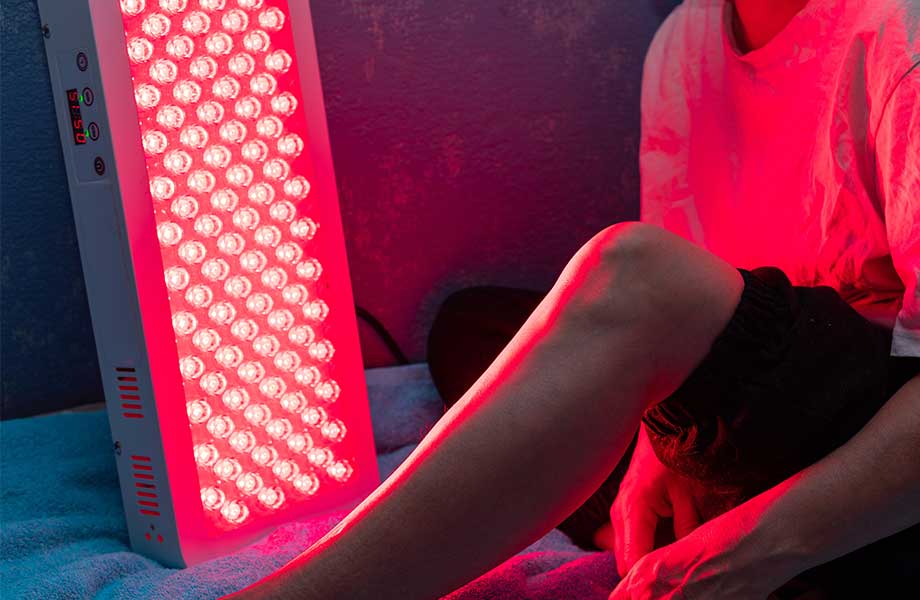
According to the Cleveland Clinic1, eye damage is also a possibility. However, a systematic review published in 20172 suggests that red light therapy is safe for the eyes in healthy, unmedicated adults. Still, it’s best to wear proper eye protection when using a red light therapy device to shield your eyes from the light and reduce the risk of significant damage. It’s also wise to avoid staring directly into the light for long periods.
In addition, while some studies3 show that red light therapy can help slow the growth of cancer cells, others suggest that it may make cancer cells more aggressive4. Many of these studies were done on animals, though, so more research is needed on humans to determine red light therapy’s effects on cancer cells.
It’s important to note that certain populations should avoid red light therapy or speak to a healthcare provider before trying it. These include people who are pregnant and those with health conditions such as eye disease, lupus, and thyroid disease.
Red light therapy can also interact with some medications, like immunosuppressants, certain antibiotics, and other medications that increase photosensitivity (sensitivity to ultraviolet light).
Benefits of Red Light Therapy
Despite there being some risks involved, there are plenty of benefits of red light therapy. When used safely and correctly, it can help treat various chronic and acute health conditions. Below are some of the ways red light therapy can improve your overall health and wellness.
May Reduce the Appearance of Fine Lines and Wrinkles
Red light therapy devices are especially popular for their potential to reduce visible signs of aging, such as fine lines and wrinkles. One study published in 20215 showed that women between the ages of 40 and 65 experienced a 30% decrease in wrinkle volume after receiving 10 red light therapy treatments for four weeks.
In a more recent study published in 20236, healthy men and women received two photobiomodulation treatments per week for three months. They showed noticeable improvements in skin health, including a reduction in the depth of crow’s feet wrinkles.
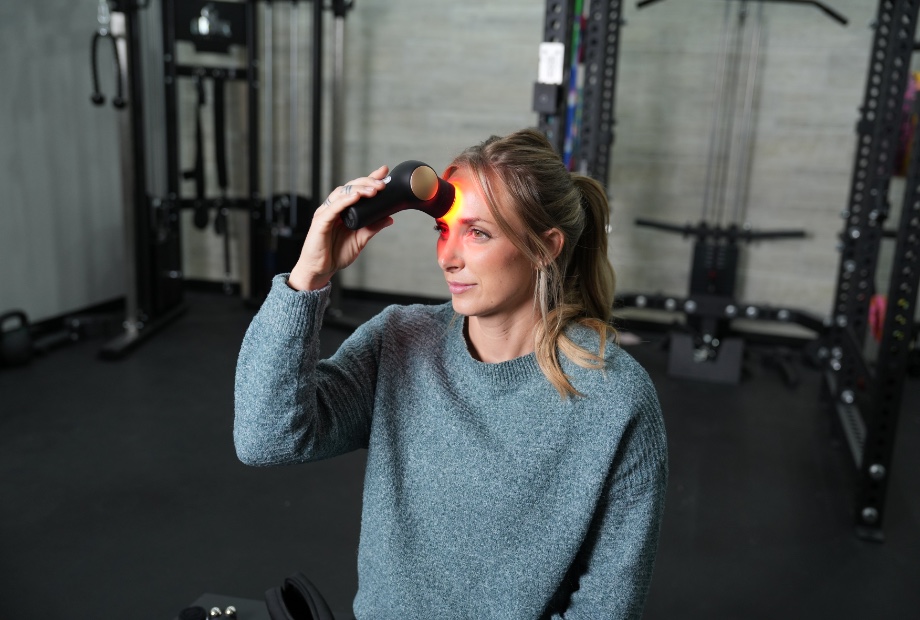
May Help Treat Skin Conditions
Improved skin health is another popular reason individuals use red light therapy. This treatment method has been shown to reduce inflammation and other side effects, such as itching, in individuals with eczema7, rosacea8, and psoriasis9.
Even in people who haven’t been diagnosed with a skin condition, red light therapy can improve skin health. In a study published in 202110, researchers found that low-level red light therapy stimulated elastin and collagen production in human skin in vitro (done in a lab). Collagen and elastin give the skin strength and elasticity, so this study suggests that red light therapy can improve skin quality in living humans.
RELATED: Best Collagen Supplements
May Help Wound Healing
Research suggests that red light therapy can help wounds heal faster because of its ability to stimulate fibroblasts (cells that form connective tissues). A 2023 study11 showed that low-power laser light therapy increased the rate of wound healing in an in vitro tissue sample. While these results were obtained in a lab, scientists believe similar effects can be achieved in vivo (in living organisms).
Can Relieve Joint and Muscle Pain
Whether you’re looking for pain relief from a chronic condition or want to ease post-workout soreness, red light therapy may help. A 2017 systematic review12 of 46 studies on the effects of red light and near-infrared light on muscle recovery found that both types of treatment can reduce delayed-onset muscle soreness (DOMS) and help heal muscle tissue damage.
Furthermore, a 2022 study13 published in the European Journal of Physical and Rehabilitation Medicine found that low-intensity photobiomodulation therapy can temporarily relieve pain in individuals with chronic conditions such as fibromyalgia and osteoarthritis.
RELATED: Best Muscle Pain Relief Cream
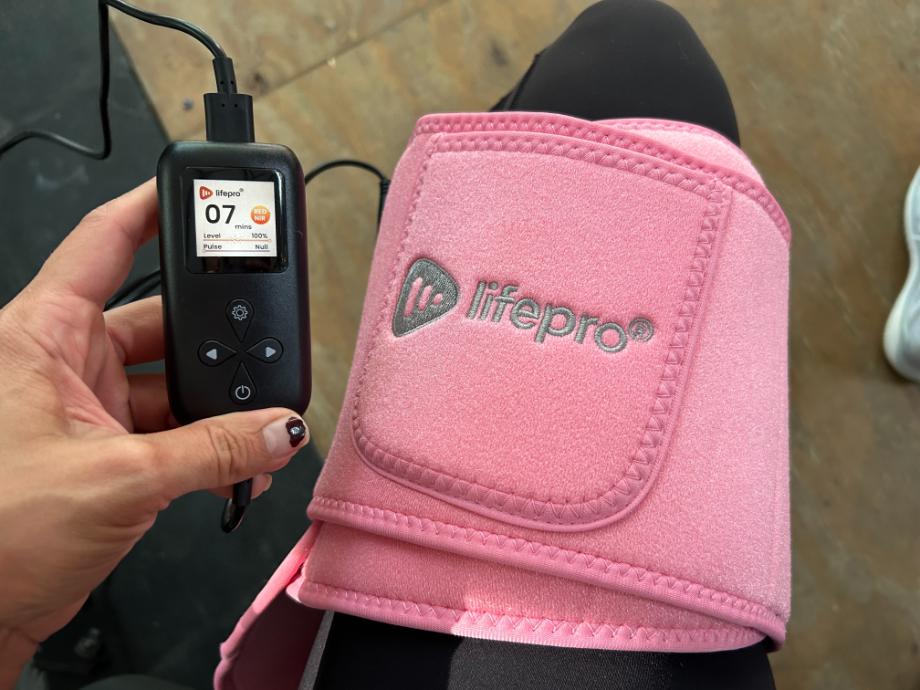
Can Promote Hair Growth
For individuals experiencing alopecia (hair loss), red light therapy may be an effective treatment for stimulating hair growth. A 2021 study14 published in Annals of Dermatology showed that low-level light therapy promoted the growth of human hair follicles in a hair follicle culture.
May Support Brain Health
In 2019, Michael Hamblin, a top researcher in the field of photobiomodulation, published a review of several research studies15 and clinical trials that analyzed the effects of red light therapy on cognitive function. The review found that red LED lights can help reduce cognitive decline and improve symptoms of Alzheimer’s disease, dementia, and Parkinson’s disease.
Note, however, that Hamblin is also on scientific advisory boards for several manufacturers of red light therapy devices. This could have influenced the results of his review.
Red Light Therapy Dangers: Final Thoughts
There aren’t many red light therapy dangers, as it’s generally considered safe for healthy individuals. However, side effects can still occur, especially if you use your device incorrectly. It’s also a good idea to seek medical advice from a healthcare professional before trying any kind of LED light therapy.
Below are a few more things to remember when adding red light therapy to your wellness and skincare routine:
- When used correctly, red light therapy can be a safe and effective treatment option for various skin concerns. It can also help relieve joint and muscle pain, speed up the rate of wound healing, and promote hair growth.
- Possible side effects of red light therapy include burned or blistered skin, increased sensitivity to UV rays, and interactions with certain medications. While rare, eye damage is also a possibility.
- You can reduce the risks by following the instructions that come with your red light therapy device, not using your device too frequently or at very high levels, and wearing proper eye protection.
Red Light Therapy Dangers: FAQs
Are there any risks to red light therapy?
Potential risks of red light therapy include burned skin, blistering, interactions with certain medications, and increased sensitivity to the sun.
Who cannot use red light therapy?
You should avoid red light therapy or consult a healthcare professional before trying it if you:
-Are pregnant
-Take medications that increase your skin or eye sensitivity
-Have eye disease, lupus, or a thyroid disorder
In addition, there is conflicting research on whether or not red light therapy is an effective treatment option for cancer. If you had or currently have cancer, speak with your healthcare provider before using a red light therapy device.
What are the disadvantages of red light?
One potential disadvantage of red light is that it can cause burns or blisters, especially if used for too long or too frequently. It may also cause retinal damage if you stare directly into the light for too long.
Does red light therapy affect the brain?
Red light therapy can affect the brain, but not necessarily in a harmful way. Some research15 has shown that it can help delay or reduce cognitive decline in patients with Alzheimer’s disease, Parkinson’s disease, and dementia.
References
- Professional, C. C. M. (2024, June 12). Red Light Therapy. Cleveland Clinic. https://my.clevelandclinic.org/health/articles/22114-red-light-therapy
- Brouwer, A., Nguyen, H. T., Snoek, F. J., van Raalte, D. H., Beekman, A. T. F., Moll, A. C., & Bremmer, M. A. (2017). Light therapy: is it safe for the eyes?. Acta psychiatrica Scandinavica, 136(6), 534–548. https://doi.org/10.1111/acps.12785
- Yang, K. L., Khoo, B. Y., Ong, M. T., Yoong, I. C. K., & Sreeramanan, S. (2021). In vitro anti-breast cancer studies of LED red light therapy through autophagy. Breast cancer (Tokyo, Japan), 28(1), 60–66. https://doi.org/10.1007/s12282-020-01128-6
- Lin, Y. Y., Lee, S. Y., & Cheng, Y. J. (2023). Low-Level Laser Therapy Induces Melanoma Tumor Growth by Promoting Angiogenesis. Life (Basel, Switzerland), 13(2), 320. https://doi.org/10.3390/life13020320
- Mota, L. R., Duarte, I. D. S., Galache, T. R., Pretti, K. M. D. S., Neto, O. C., Motta, L. J., Horliana, A. C. R. T., Silva, D. F. T. D., & Pavani, C. (2023). Photobiomodulation Reduces Periocular Wrinkle Volume by 30%: A Randomized Controlled Trial. Photobiomodulation, photomedicine, and laser surgery, 41(2), 48–56. https://doi.org/10.1089/photob.2022.0114
- Couturaud, V., Le Fur, M., Pelletier, M., & Granotier, F. (2023). Reverse skin aging signs by red light photobiomodulation. Skin research and technology : official journal of International Society for Bioengineering and the Skin (ISBS) [and] International Society for Digital Imaging of Skin (ISDIS) [and] International Society for Skin Imaging (ISSI), 29(7), e13391. https://doi.org/10.1111/srt.13391
- InformedHealth.org [Internet]. Cologne, Germany: Institute for Quality and Efficiency in Health Care (IQWiG); 2006-. Eczema: Learn More – Light therapy, tablets and injections. [Updated 2021 Feb 11]. Available from: https://www.ncbi.nlm.nih.gov/books/NBK424892/
- Sorbellini, E., De Padova, M. P., & Rinaldi, F. (2020). Coupled blue and red light-emitting diodes therapy efficacy in patients with rosacea: two case reports. Journal of medical case reports, 14(1), 22. https://doi.org/10.1186/s13256-019-2339-6
- Zhang, P., & Wu, M. X. (2018). A clinical review of phototherapy for psoriasis. Lasers in medical science, 33(1), 173–180. https://doi.org/10.1007/s10103-017-2360-1
- Li, W. H., Seo, I., Kim, B., Fassih, A., Southall, M. D., & Parsa, R. (2021). Low-level red plus near infrared lights combination induces expressions of collagen and elastin in human skin in vitro. International journal of cosmetic science, 43(3), 311–320. https://doi.org/10.1111/ics.12698
- Giannakopoulos, E., Katopodi, A., Rallis, M., Politopoulos, K., & Alexandratou, E. (2022). The effects of low power laser light at 661 nm on wound healing in a scratch assay fibroblast model. Lasers in medical science, 38(1), 27. https://doi.org/10.1007/s10103-022-03670-5
- Ferraresi, C., Huang, Y. Y., & Hamblin, M. R. (2016). Photobiomodulation in human muscle tissue: an advantage in sports performance?. Journal of biophotonics, 9(11-12), 1273–1299. https://doi.org/10.1002/jbio.201600176
- DE Oliveira, M. F., Johnson, D. S., Demchak, T., Tomazoni, S. S., & Leal-Junior, E. C. (2022). Low-intensity LASER and LED (photobiomodulation therapy) for pain control of the most common musculoskeletal conditions. European journal of physical and rehabilitation medicine, 58(2), 282–289. https://doi.org/10.23736/S1973-9087.21.07236-1
- Yang, K., Tang, Y., Ma, Y., Liu, Q., Huang, Y., Zhang, Y., Shi, X., Zhang, L., Zhang, Y., Wang, J., Zhu, Y., Liu, W., Tan, Y., Lin, J., & Wu, W. (2021). Hair Growth Promoting Effects of 650 nm Red Light Stimulation on Human Hair Follicles and Study of Its Mechanisms via RNA Sequencing Transcriptome Analysis. Annals of dermatology, 33(6), 553–561. https://doi.org/10.5021/ad.2021.33.6.553
- Hamblin, Michael. (2019). Photobiomodulation for Alzheimer’s Disease: Has the Light Dawned?. Photonics. 6. 77. 10.3390/photonics6030077.
Further reading

Looking to save money on Reebok products? There’s probably a Reebok promo code you can use to get a discount on your next purchase. Read more

In our guide to pea protein vs whey protein, learn the critical differences to decide which one is right for you. Read more

Our expert guide on the best pool exercises for weight loss can help you trim inches off your waistline by taking your workouts to the water. Read more

Your search for the best recumbent exercise bike ends here with our roundup of picks selected by certified personal trainers. Read more

